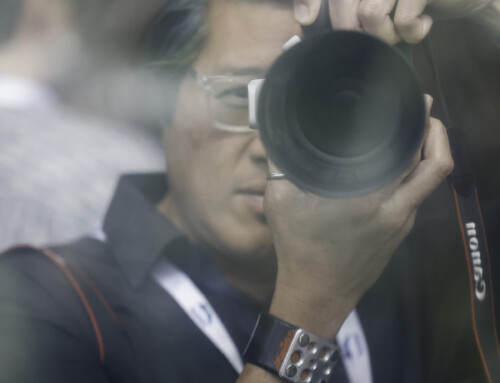 The new Impossible I-1 is the first instant camera developed by Impossible Project and has some really neat features including an app that you can control it from for added creative features. I ordered one as soon as possible which was a day before it was available to the general public, having been a supporter of Impossible since the early days (as a Pioneer).
The new Impossible I-1 is the first instant camera developed by Impossible Project and has some really neat features including an app that you can control it from for added creative features. I ordered one as soon as possible which was a day before it was available to the general public, having been a supporter of Impossible since the early days (as a Pioneer).
The packaging it arrives in is pretty nicely designed and the camera has just the right heft. It doesn’t feel as light as I anticipated, looking at it just in photos before actually receiving it.
The nice thing is that it now uses film specifically formulated for it (I-type) which also means that the camera and film were designed hand in hand so the rollers work smoothly to insure the developer gets smushed evenly across the image area. (You can also shoot the ‘regular’ pack film that Impossible sells.)
The shutter button is a bit sensitive and I snapped a photo of myself as I fiddled with it to check the status of the film (you can half press the shutter to see how many shots are left, battery power, etc.) I heard on the Instant Photo Show podcast that one of the hosts did the same thing and also took an inadvertent selfie in the same manner 🙂
The viewfinder has a system to use to make sure you frame your shots well and I found that it works pretty well for images that are about three feet and further away. When it’s darker it’s a bit hard to see what is in frame though. And the battery life seems a bit short. I think in the manual it says what to expect, but I found in real life usage I almost wanted to charge it up fully before every pack I shot. I wonder if you use any of the film that has it’s own batteries if that affects the battery life on the I-1 or not…
The flash is a ring flash surrounding the lens so it’s great for shadowless portraits. Since the lights are LEDs they are quite powerful and put out a good amount of light. However, I found using it for a group shot about 6-8 feet away via the app the exposures were a bit dark on several test shots. It definitely takes some time to figure out how it will expose in different types of situations but you can definitely get good results once you get dialed in with it. The manual settings are nice especially if you have a light meter or other method to estimate exposures (I often use my DSLR if I have it around).
Of course any Impossible I-1 review would not be complete without photos. Since I brought the camera along on a trip, I ended up giving away a lot of the prints and didn’t get to take proper shots of them, so there’s a mix of sample photos below.

Impossible I-1 manual exposure night photo
Update: July 4, 2016 – we updated the the camera (well, reset it) as per Impossible’s support recommendation and it helped with the battery life. It’s not super long especially on standby but it fully charges now and seems to hold charge better. Previously even overnight, it would only get up to nine LEDs of charge (90%).








